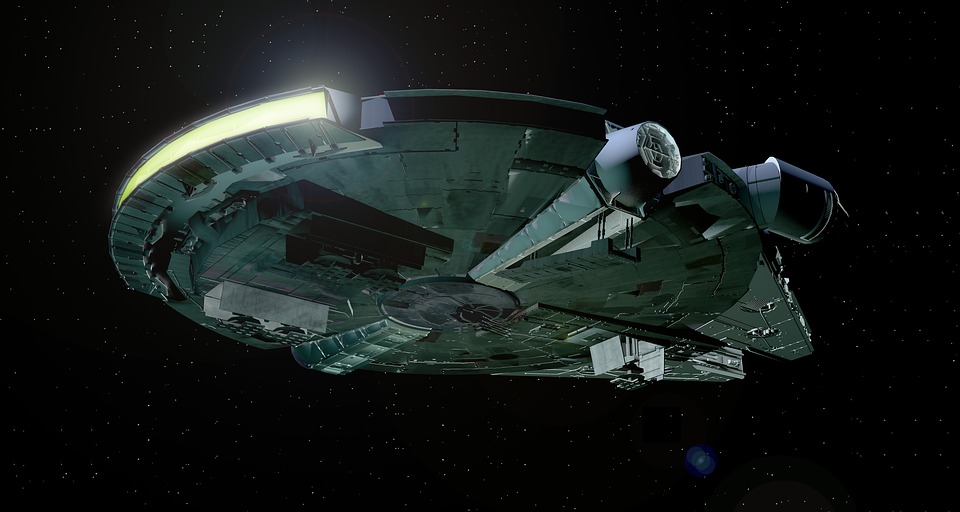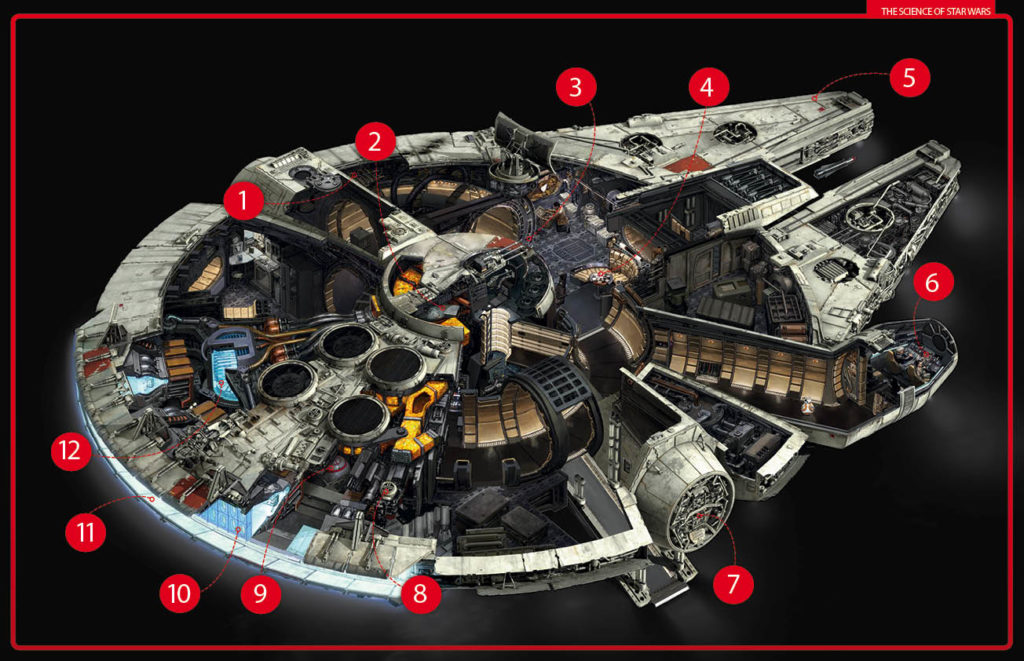The Science of Star Wars: The Millennium Falcon
by How It Works Team · 04/05/2019

Could this iconic ship really have graced the skies of the Star Wars universe?
Perhaps there is no spaceship as memorable as the Millennium Falcon in any film or TV show. Once merely a freighter, it proved its worth by helping to destroy two Death Stars, and it could even make mincemeat of the Kessel Run.
Although many of the technologies employed were a bit far-fetched, some are grounded in reality. Its impulse engines for one were powered by nuclear fusion, something that we’re just getting to grips with in the real world. And while this ship could travel faster than the speed of light, we do know it’s theoretically possible for a spaceship to at least get near to light speed.
The ship is powered by fictional exotic particles called hypermatter, which you won’t find in any textbooks. But we do know of plenty of other exotic matter. Maybe something out there might power our own Millennium Falcon one day.
Inside the Falcon
Just like on the ISS, the Millennium Falcon recycles its water, providing its crew with drinking water.
The Millennium Falcon was powered by hypermatter, an exotic form of particles that you won’t find anywhere in our real universe.
While the laser cannons might be a bit far-fetched, it’s rumoured the Soviet Union once tested a cannon in space.
Passengers can ‘relax’ in the main hold during flight and even sit down to a game of dejarik (holographic chess).
The acceleration compensator apparently keeps the crew grounded in the ship. Anti-gravity systems like this, however, do not exist.
Witness to many tense moments, most of the Falcon is controlled from here, including the deflector shield.
Airlocks are something we use regularly in spaceflight, and this design looks similar to what you’d see on the ISS.
This ejects tachyons into space, hypothetical particles that can travel faster than light. However, we’ve never found any.
On the ISS, astronauts use Soyuz capsules as emergency pods — not too far removed from what you see here.
The nuclear fuel was ignited to start a fusion reaction to provide thrust. Fusion rocket design is a purely hypothetical idea, however.
The ship’s below-light-speed engines were powered by radioactive liquid metal — something we probably wouldn’t recommend launching into orbit.
Using fictional hypermatter, this drive enabled the ship to go faster than light, which is something that’s just not possible in our current understanding of physics.
This article was originally published in How It Works issue 106, written by Jonny O’Callaghan
For more science and technology articles, pick up the latest copy of How It Works from all good retailers or from our website now. If you have a tablet or smartphone, you can also download the digital version onto your iOS or Android device. To make sure you never miss an issue of How It Works magazine, subscribe today!






